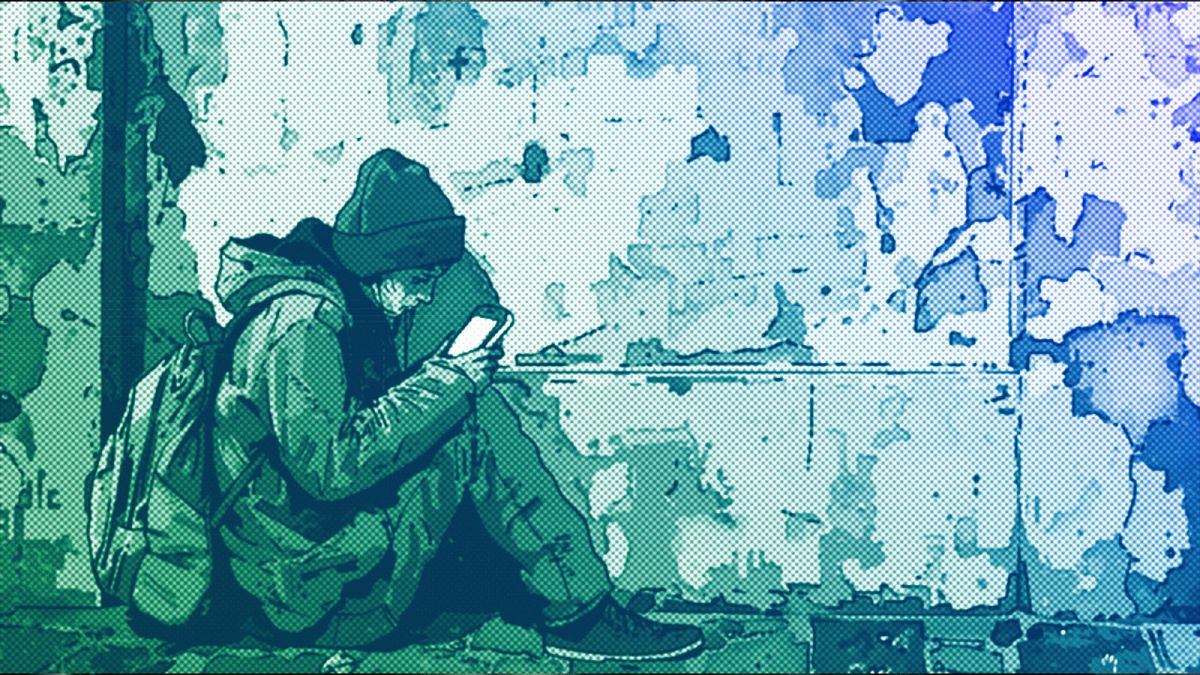Is digitalisation ignoring socio-economic rights?

By Juliana Santos Wahlgren, Director, Susana Anastácio is Senior Communication Officer, European Anti-Poverty Network (EAPN)
The opinions expressed in this article are those of the author and do not represent in any way the editorial position of Euronews.
Without measures to tackle this issue, the digital divide will continue to exacerbate existing inequalities, further marginalising those who are already vulnerable, Juliana Santos Wahlgren and Susana Anastácio write.
Imagine navigating life without a phone, computer, or internet connection. When you picture this scenario, is it hard to imagine?
For many, this is not a hypothetical scenario but a hard reality.
In today’s increasingly digital world, access to the internet and digital devices has transformed from a luxury to a necessity – and this shift is deeply connected to socio-economic rights.
Digitalisation influences nearly every aspect of our daily lives, from education and employment to social connections and reaching out to essential services. However, digital resources are far from being easily accessible to everyone.
In Europe, digital inequality significantly reflects broader socio-economic disparities: many families must decide between paying for internet for their children or having a meal on the table.
The lack of internet and devices can exclude people from many opportunities and resources: imagine being unable to pay bills, attend online classes, or even apply for a job because you lack a computer or a stable internet connection.
For millions of Europeans, this scenario is a daily struggle, making the digital divide not only a technological issue but a significant social concern that needs urgent attention.
And it makes us ask: is digitalisation not paying attention to class aspects?
We need to combat digital neglect
Access to the internet and digital devices has become as essential as the right to energy or clean water. These tools are no longer mere conveniences; they are fundamental to fully participating in society.
From paying bills online to accessing the welfare system, it seems like being online is crucial for fulfilling day-to-day needs. Without them, individuals are often left behind, struggling to engage with the world around them.
This digital neglect is a modern form of discrimination which disproportionately affects low-income households.
Those who lack digital access are not just deprived of entertainment or convenience—they are deprived of opportunities for education, employment, and social protection.
Combating digital neglect means ensuring that everyone can access and benefit from the same rights, regardless of income or location.
Without measures to tackle this issue, the digital divide will continue to exacerbate existing inequalities, further marginalising those who are already vulnerable.
This digital-induced poverty is especially severe for vulnerable groups such as single mothers, the homeless, those living in shelters, the elderly, and people in rural areas. In rural areas, poor digital infrastructure amplifies the problem, leaving entire communities disconnected from the digital world.
For these people, being offline is not a choice: it is a consequence of economic austerity and systemic exclusion. The inability to access the internet further exacerbates poverty, social isolation, and exclusion.
Addressing this issue requires recognising that to secure fundamental rights and an inclusive society, it is important to explore solutions outside the digital platforms.
Virginia Eubanks’ concept of the “digital poorhouse” further highlights the risks of assuming that technology alone can solve social problems. In her analysis, digital tools, often developed with good intentions, can end up reinforcing inequalities rather than alleviating them.
For example, welfare systems that rely on digital platforms may seem neutral, but they often disproportionately burden the poor, as these systems are shaped by societal stereotypes and economic fears. This is not a coincidence: technologies of poverty management reflect and aggravate existing inequalities.
Lack of digital access perpetuates cycles of poverty
Moreover, the shift toward a cashless society worsens financial exclusion for those who lack access to digital banking services. Many essential financial transactions—from paying bills to receiving wages—are increasingly conducted online.
For those without internet access or the skills to navigate online banking, managing finances becomes a difficult exercise. This digital financial exclusion leaves individuals vulnerable to predatory financial practices, high fees for alternative services, and the inability to build credit or savings.
In-work poverty is another significant issue linked to digital inequality. Those without digital skills often find themselves stuck in low-paying jobs with little room for advancement.
As industries automate and digitalise, workers without the necessary skills are left behind, unable to compete in a rapidly changing job market. This creates a large gap between those who can keep up with technological advancements and those who cannot, further entrenching economic disparities.
Digital literacy then becomes another critical aspect of this divide. Simply having access to the internet is not enough if individuals do not know how to use it effectively.
This gap is often overlooked, leading to a situation where people are technically connected and still unable to navigate online resources, apply for jobs, and enhance skills and competencies through training. The lack of digital access and literacy can trap individuals in low-paying, precarious jobs, perpetuating cycles of poverty.
Therefore, digital literacy programs are crucial to bridge this gap, empowering individuals to fully engage in this ecosystem.
Nevertheless, digital systems designed to deliver welfare services often fail the very people they are meant to help. Automated systems that assess eligibility for benefits can misjudge needs, leading to inadequate or incorrect evaluations.
These systems, driven by data rather than human judgment, may overlook the nuances of individual circumstances, resulting in ineffective assistance, which can lead to individuals being denied access to social protection.
This form of automation can further marginalise those already struggling, as they find themselves battling both bureaucratic hurdles and digital barriers. And if it is true, that this makes us wonder: are digital welfare systems by design discriminatory?
No digital access, no dignity
The economic impact of digital induced poverty is not just about individual livelihoods — it’s about the overall health of the economy. Addressing digital inequality is not just a social need but an economic one as well.
Poverty requires a multidimensional approach that goes beyond simply providing internet access and devices.
To create a truly inclusive digital society, efforts must focus on ensuring that all individuals have the tools, skills, and opportunities to engage meaningfully with the digital world but beyond: it is imperative to secure in-person services, options and alternatives as a true democratic solution to uplift fundamental rights.
This involves both policy-level changes and community-based initiatives that prioritise social inclusion as a common prerogative. Only through comprehensive and inclusive strategies can we address the deep-rooted inequalities that continue to divide our societies.
If there is no access to the digital or offline alternatives, there is no dignity for individuals. No one is protected until all of us are.
Juliana Santos Wahlgren is Director, and Susana Anastácio is Senior Communication Officer at the European Anti-Poverty Network (EAPN).
At Euronews, we believe all views matter. Contact us at [email protected] to send pitches or submissions and be part of the conversation.
Source: Euro News














